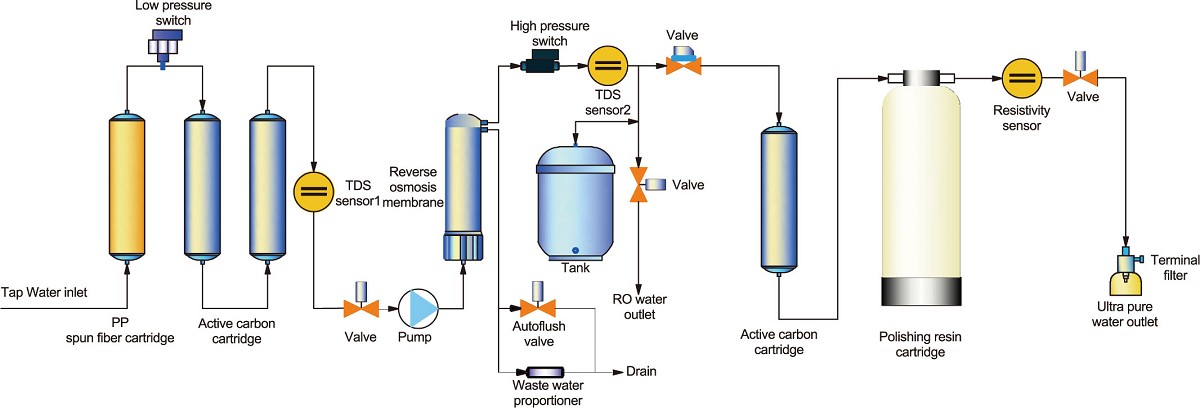Deionized Water
Deionized Water
The production of Deionized water consists when Ions are electrically charged atoms or molecules found in water that have either a net negative or positive charge. For many applications that use water as a rinse or ingredient, these ions are considered impurities and must be removed from the water.
Ions with a positive charge are called "Cations" and ions with a negative charge are called "Anions". Ion exchange resins are used to exchange non desirable cations and anions with hydrogen and hydroxyl, respectively, forming pure water (H20), which is not an ion.
In order to produce deionized water, cation resin is regenerated with Hydrochloric Acid (HCl). The Hydrogen (H+) is positively charged and therefore attaches itself to the negatively charged cation resin bead. The anion resin is regenerated with sodium hydroxide (NaOH). Hydroxyl (OH-) is negatively charged and attaches itself to the positively charged anion resin bead.
Different ions are attracted to a resin bead with different strengths. For example, calcium is more strongly attracted to a cation resin bead than sodium is. The hydrogen on the cation resin bead and the hydroxyl on the anion resin bead do not have a strong attraction to the bead. This is what allows ion exchange to take place. As positively charged cations flow across cation resin beads, the cations are exchanged for hydrogen (H+). Likewise, as negatively charged anions flow across anion resin beads, the anions are exchanged for hydroxyl (OH-). When you combine hydrogen (H+) and hydroxyl (OH-) you form pure H20. Eventually all of the exchange sites on the cation and anion resin beads are used up and the tank no longer produces deionized water. At this point, the resin beads require regeneration to prepare them for use again.